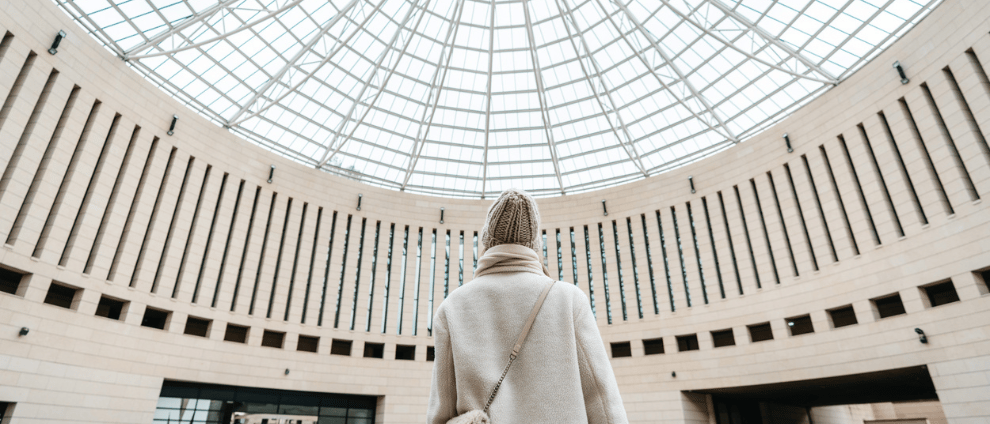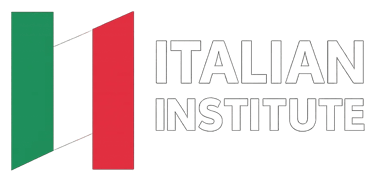Mart – Rovereto: A Journey into the Heart of Modern and Contemporary Art
An immersive exploration of Italy’s most dynamic art museum, where avant‑garde creativity meets breathtaking architecture in the Alps.

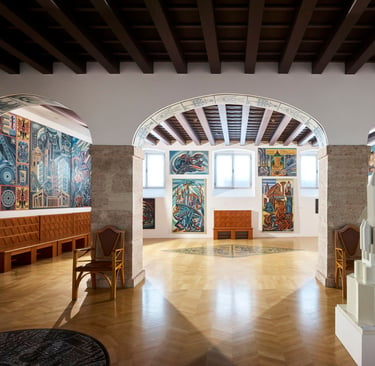
An Unexpected Masterpiece in Northern Italy
At first glance, Rovereto might not seem like the kind of town that would house one of Europe’s most dynamic art museums. Nestled in the Trentino region, surrounded by mountains and vineyards, it has the quiet air of a provincial town, more closely associated with Alpine traditions than avant-garde creativity. But this tranquil atmosphere is precisely what makes the Mart—Museo di Arte Moderna e Contemporanea di Trento e Rovereto—so arresting.
Rising from the center of Rovereto like a futuristic temple, the Mart is both unexpected and unforgettable. With its monumental glass dome and solemn portico, it fuses classical grandeur with contemporary elegance. Designed by architect Mario Botta in collaboration with engineer Giulio Andreolli, the museum offers more than just a home for art—it offers a new way of looking at Italy, creativity, and the dialogue between past and present.
Since its inauguration in 2002, the Mart has become a magnet for artists, curators, historians, and travelers from all over the world. It is a place of convergence, where modernism and futurism meet philosophy and political thought, where art becomes not just visual but intellectual and emotional. The Mart is not just a gallery. It is a journey into the cultural soul of modern Italy.
A Bold Architectural Vision
The physical form of the Mart is inseparable from its identity. Mario Botta’s design draws inspiration from the Pantheon of Rome but reinterprets it through the language of modern architecture. The most striking feature is the immense glass dome—a circular skylight spanning 40 meters in diameter, supported by slender steel beams and set into a sunken courtyard. It creates a space that is at once monumental and serene, filled with natural light and open to the sky.
The entrance itself feels ceremonial. Visitors pass through a neoclassical portico that references the academic institutions and civic buildings of Italy’s past, only to enter a space that is unapologetically contemporary. The dome overhead filters the light, bathing the courtyard in shifting patterns throughout the day. This interplay of tradition and innovation, solidity and transparency, mirrors the museum’s own mission: to bridge the historical and the modern, the canonical and the experimental.
Inside, the galleries are arranged over several levels, with open, flexible spaces that allow for dynamic exhibitions. The design encourages movement and contemplation, offering a variety of visual and spatial experiences. It is a building designed not just to contain art, but to elevate it.
Visiting the Mart: Practical Information
The Mart is located in Rovereto, in the Trentino-Alto Adige/Südtirol region of northern Italy. The town is easily accessible by train from major cities such as Verona, Trento, and Bolzano. The museum is a short walk from the Rovereto train station, making it an ideal destination for a day trip or weekend getaway.
Opening hours typically run from Tuesday to Sunday, with the museum closed on Mondays. Hours may vary for special events or holidays, so visitors are advised to check the schedule in advance. Tickets are available at the entrance and online, with discounts for students, seniors, and groups. Admission includes access to all current exhibitions and the permanent collection.
Guided tours are available in multiple languages and can be booked in advance. The museum also offers family-friendly itineraries, audio guides, and interactive digital tools to enhance the visit.
Facilities include a bookshop stocked with art publications, local design objects, and exhibition catalogues, as well as a café with panoramic views and locally sourced refreshments. The museum is fully accessible to visitors with disabilities, with elevators, ramps, and accessible restrooms throughout the building.
For those interested in deeper engagement, the Mart offers a membership program with year-round benefits, including free admission, invitations to previews, and participation in exclusive events.
Visit the official website here: https://www.mart.tn.it
A Space for Ideas, Not Just Objects
What distinguishes the Mart from many other museums is its intellectual ambition. It is not content to merely display art; it seeks to interpret, interrogate, and provoke. The museum regularly organizes thematic exhibitions that explore connections between art and politics, science, literature, and philosophy. Past shows have addressed topics as diverse as propaganda and visual culture, the aesthetics of fascism, utopia in design, and the relationship between art and ecology.
These exhibitions are often accompanied by critical essays, lectures, film screenings, and symposia that deepen the conversation. The Mart positions itself as a forum for cultural dialogue, not a temple of isolated masterpieces. It invites visitors to think, to question, and to see art as a reflection of the world they inhabit.
This commitment extends to its educational programs, which are sophisticated and inclusive. Whether you're a university researcher, a high school student, or a curious tourist, the Mart offers pathways for learning and engagement. Workshops, guided tours, digital archives, and publications all contribute to a rich ecosystem of cultural production.
The Library and Archive: A Hidden Treasure
Less known to the casual visitor but immensely valuable is the Mart’s vast archive and library, which serves as a major center for research in modern and contemporary art. With over 80,000 volumes, the library includes rare books, exhibition catalogues, artist monographs, and critical theory. Scholars from around the world visit Rovereto to access this extraordinary resource.
The archive preserves personal papers, letters, photographs, and original manuscripts from some of the most important artists and critics of the 20th century. Among its holdings are the archives of artists like Depero, Balla, and Fontana, as well as leading intellectuals such as Maurizio Calvesi and Lea Vergine. These materials provide invaluable insights into the creative process and the cultural currents that have shaped the last hundred years.
Researchers and students can request access to the archive by appointment, and the museum frequently draws on these materials to curate exhibitions that reveal the behind-the-scenes life of art—how it is imagined, debated, and brought into being.
A Museum in Dialogue with Its Surroundings
One of the Mart’s unique strengths is its relationship with its geographic and cultural context. Rovereto, while modest in size, has long been a crossroads of ideas, shaped by its location between the Italian and German-speaking worlds. It has a rich intellectual history, from the Enlightenment philosophers of the 18th century to the resistance fighters of World War II.
The museum both draws from and contributes to this legacy. It collaborates with regional institutions, hosts community events, and integrates the rhythms of the town into its own programming. Visitors are encouraged not just to visit the museum, but to explore Rovereto itself—the historic streets, the cafes, the Alpine trails. The Mart becomes a gateway to a broader cultural experience, one rooted in place and yet open to the world.
The museum also maintains close ties with Trento, the provincial capital, and the larger network of cultural institutions in the region. Joint exhibitions, traveling shows, and collaborative projects ensure that the Mart is not an isolated jewel but part of a living cultural web.
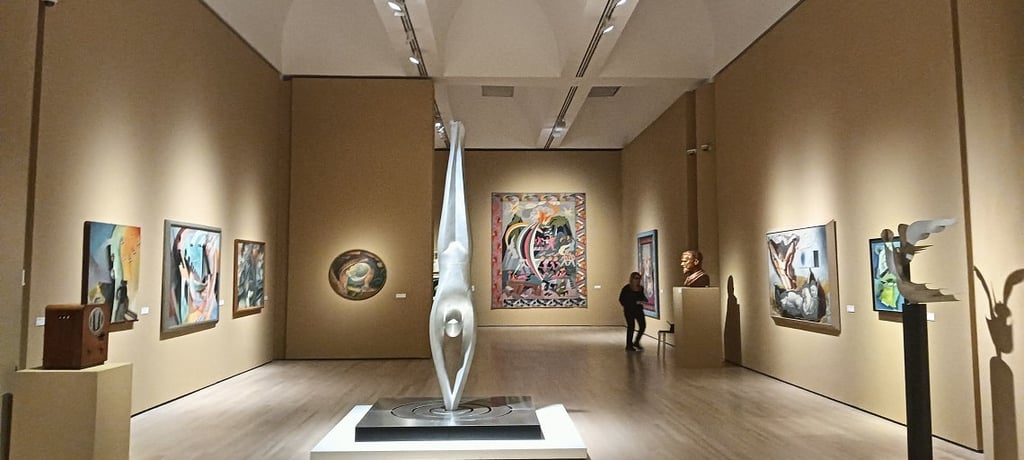

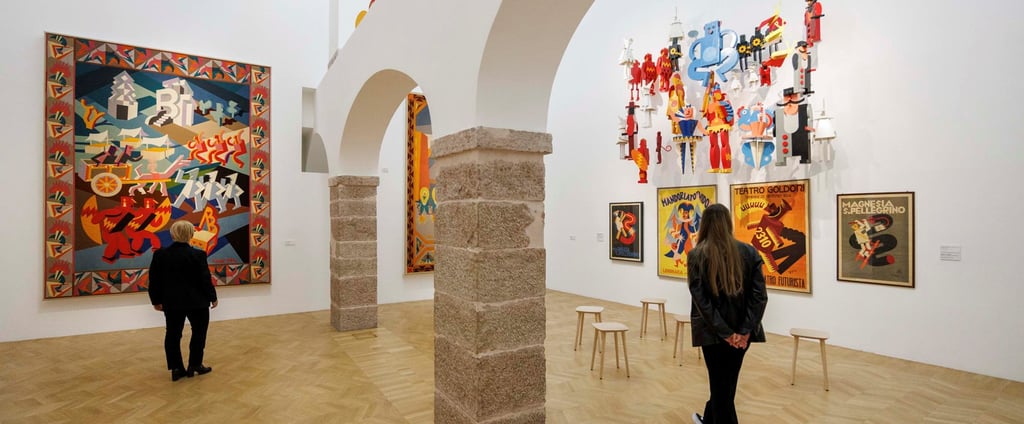

The Collections: A Century of Italian Brilliance
The Mart houses one of the most important collections of modern and contemporary art in Italy. Its holdings span the late 19th century to the present, with a particular emphasis on Italian art movements such as Futurism, Metaphysical Painting, Arte Povera, and post-war abstraction. Yet the museum’s approach is never rigidly nationalistic. It places Italian innovation in dialogue with broader European and global currents, fostering an understanding of modern art as a transnational conversation.
One of the jewels of the collection is the nucleus of works by Futurist artists such as Giacomo Balla, Fortunato Depero, and Umberto Boccioni. These visionaries, driven by a fascination with speed, technology, and rupture, helped propel Italy into the modern age. Their bold colors, dynamic lines, and provocative manifestos find a natural home in the Mart’s futuristic setting.
Another highlight is the section devoted to Giorgio Morandi, whose quiet still lifes and subtle tonal shifts offer a contemplative counterpoint to the bombast of Futurism. Other notable figures include Giorgio de Chirico, Lucio Fontana, Alberto Burri, and Piero Manzoni—artists who have shaped the trajectory of 20th-century art in Europe.
In recent years, the Mart has also expanded its collection to include contemporary voices and global perspectives, including photography, video installations, and conceptual pieces. These additions reflect a commitment to staying relevant and engaging with the evolving landscape of artistic expression.
Fortunato Depero: The Local Hero
No discussion of the Mart would be complete without mention of Fortunato Depero, Rovereto’s most famous artistic son and one of the most eccentric figures of the Futurist movement. Depero was a polymath—painter, sculptor, designer, advertiser, and writer—who believed in the fusion of art and life. His vision extended beyond galleries into the realm of industrial design, typography, textiles, and even toys.
The Mart manages the Casa d'Arte Futurista Depero, a satellite museum located just a short walk from the main building. Originally founded by Depero himself in 1957, it is the only Futurist museum in Italy created by one of the movement’s protagonists. The house-museum is a surreal immersion into Depero’s universe: geometric furniture, tapestries, collages, and a sense of whimsy that defies categorization. His influence permeates the identity of the Mart, linking the institution to the radical, playful, and interdisciplinary spirit of early 20th-century innovation.
